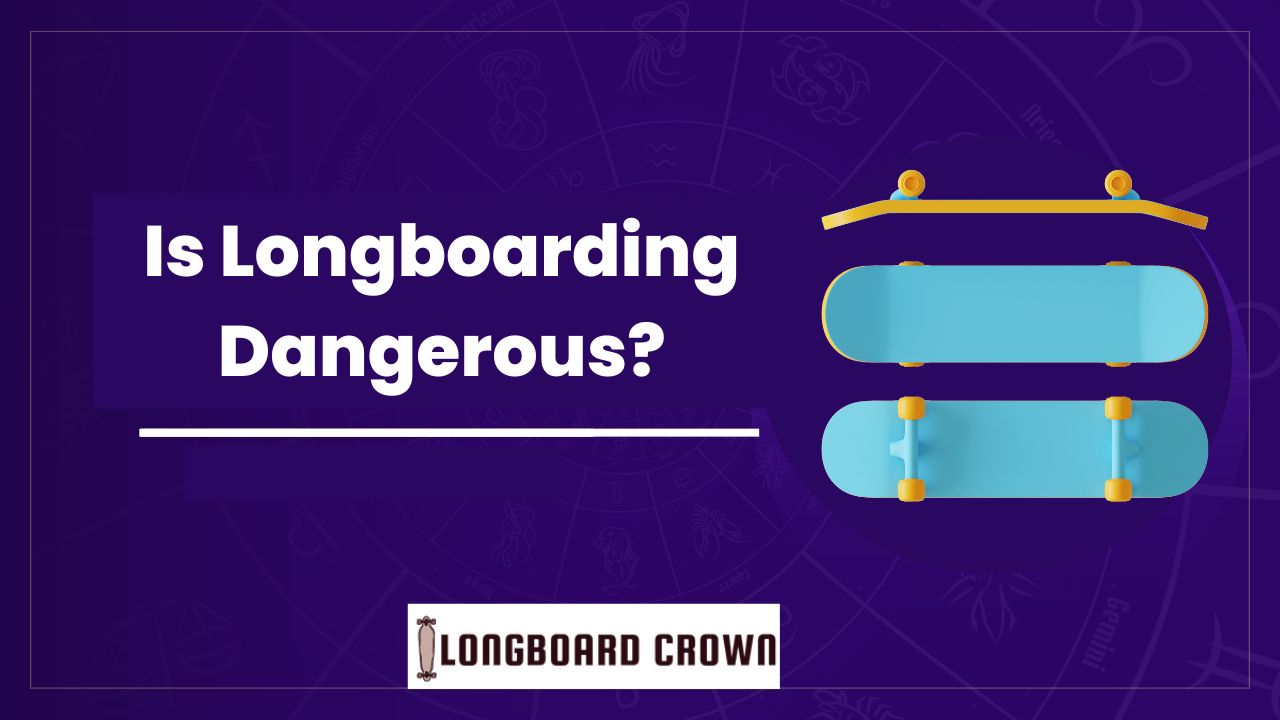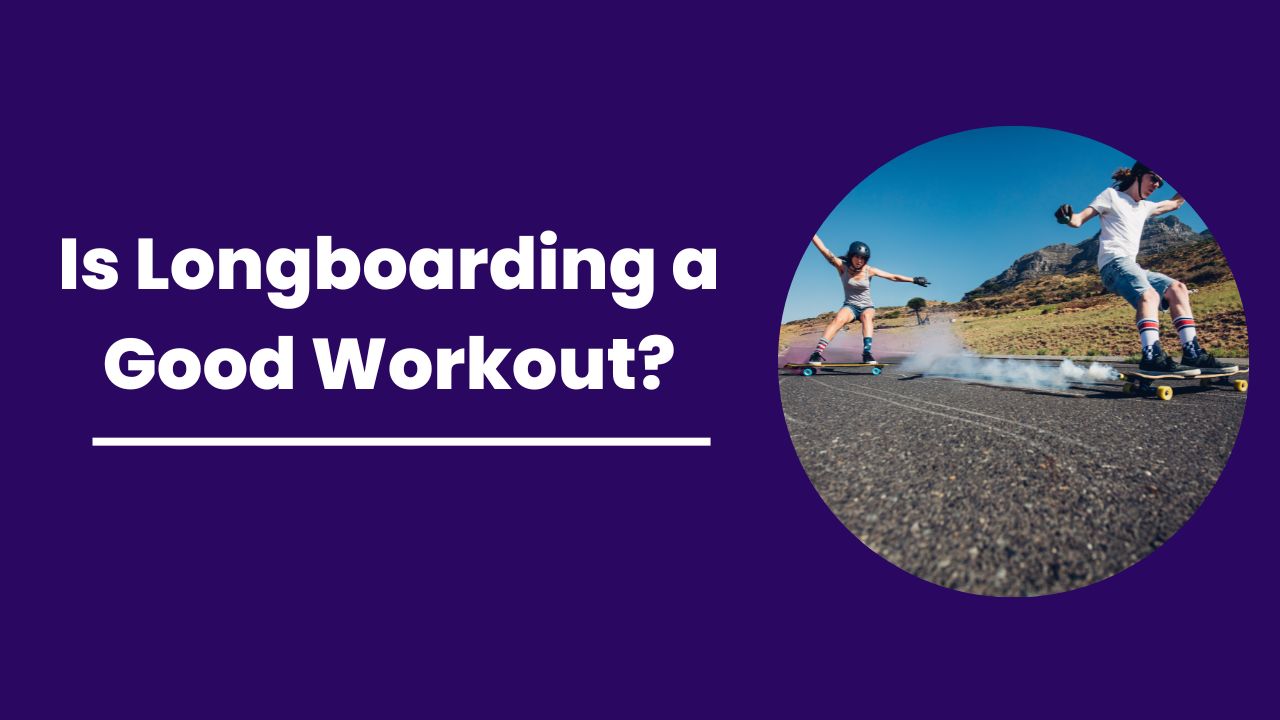A lot of new longboarders inquire, “Is longboarding dangerous?” If you are one of them, relax; you are at the appropriate place.
We will discuss the dangers of longboarding and the safety precautions you need to take to avoid them.

Contents
Is Longboarding Dangerous?
Longboarding is one of the best sports. And it has many advantages, such as body workouts, improved heart health, and even transportation. But the danger of longboarding is no secret. Longboarding in itself is not too dangerous if you are a pro.
But it can become a risk to your safety, and it completely depends on you.
Actually, longboarders use longboards in different ways. Some of them like downhill riding, some like cruising, and others like doing tricks and dancing.
Every style has some dangers, and you can get injured, so you have to look for them. Let us first discuss some common injuries due to longboarding.
Some Common Injuries
Most of the time, longboarders just can’t keep the balance between their speed and the environment around them.
So, they get injured by falling or getting into an accident with something. The common injuries a longboarder can get include arm fractures, skin damage, and head damage. Knee and hand damage is also very common.
Now that you’re aware of the most common injuries, let’s look at the various longboarding styles and the risks associated with them.
5 Types of Longboarding and Precautions, Safety Tips
1. Cruising
Cruising is the safest and most relaxed type of style. And very few cruisers ever get hospitalized. But there is some danger; your longboard can be struck into small cracks in the ground or any rock.
Alternatively, you may lose your balance and fall to the ground. However, at that speed limit, you are unlikely to be seriously injured.
Precautions
Always wear your safety gear, even when cruising. It ensures that you will not be injured if you fall. When beach cruising, it’s a good idea to slightly loosen your longboard trucks to make it simpler to turn and avoid hazards on the ground.
2. Dancing
Dancing is a very skillful and cool style. But as your speed is low, you will not get into much danger. But still, you have to look for rocks and cracks.
The most common injuries you might sustain from this kind of riding are sprains, strains, and muscle and ligament problems in your feet, lower legs, and ankles.
Precautions
Always wear your safety gear while dancing on the longboard. Also, keep an eye out for those rocks and cracks. And always choose the best flat ground for dancing.
3. Commuting
Commuting means riding on roads or using a longboard for transportation. So, ultimately, it becomes quite dangerous. You can get into an accident while changing lanes or when you are not focused on the road. You not only need safety precautions but also skills to make yourself safe.
Precautions
Always wear a helmet and protective pads on your knees and ankles while commuting. Also, you need to learn and master how to stop. Wear LEDs at night. Keep your lane while riding a longboard and always respect traffic signs and lights. Remember you can longboard as securely as you want.
4. Freeride
Freeride longboarding is a high-speed style in which you carve and slide. So it is also dangerous. You can easily fly off when moving quickly if you miss your target, don’t push your board laterally forcefully enough, or estimate the amount of weight you need to move onto the rail incorrectly.
Precautions
A good helmet, knee pad, and hand pad are recommended. Also, you need to learn and master some of the skills to be quite safe. Knowing how to roll into and out of a fall is a skill you should learn to lower your chance of suffering damage.
To learn this, though, is not simple. If that’s not your style, though, and if you’re dressed appropriately for safety, you might try just getting down on your hands and knees while donning kneepads and gloves for stopping.
5. Downhill longboarding
Downhill longboarding requires or involves very high speeds. Often, longboarders will go from 50 M/h to 60M/h. So this also means higher risk.
But longboarders that are attracted to this type of longboarding are also very conscious and skillful. If you are a beginner we didn’t recommend you to do downhill longboarding.
Precautions
For serious training, you should invest in a full-face helmet, full-body leather, and back protective equipment. Additionally, for hands-down sliding before high-speed curves, you’ll need robust slide gloves.
So now you have learned about the different styles of longboarding and their safety risk, but how much can a longboard be dangerous? Let us discuss the statistics.
How Much A Longboard Is Dangerous?
Riding a longboard can be extremely dangerous even more than a skateboard. And the risk of injuries is higher than in any other type of similar sport. Statistics show that the majority of longboarders who fall while riding one sustain an injury, and that downhill longboarders are at a higher risk of doing so.
Most of the longboarders that get hospitalized have serious brain injuries. Also, most people who got injured while longboarding, according to statistics, were not wearing safety helmets and pads. But can a longboard cause death? Let us learn about this.
Statistics Of Death During Longboarding
Longboarding has been linked to fatalities. In Canada and the United States, there were five longboarding-related fatalities in 2012. These fatalities raised concerns, prompting several communities to think about outlawing longboarding in some regions.
Another longboarding-related death was reported in 2015 when a guy was discovered unconscious after a longboarding accident on Pinebrook Boulevard in Summit Park, Utah. He sustained serious wounds that eventually caused his death.
In most of the death cases that were reported, the patient received injuries, including serious head injuries, so safety helmets are highly recommended. Also, to make you completely safe, here is our safety guide for you.
Safety Guide For Longboarding
Here are some key tips and precautions you should follow when longboarding.
Safety Gear And Equipment
Your risk of injury can be decreased by wearing correctly fitting protective personal equipment when longboarding. Helmets, wrist guards, elbow pads, and knee protectors fall under this category. Helmet use was incredibly low among individuals who sought medical attention for longboarding-related injuries.
In skating, wearing a helmet can lower your risk of head injuries; longboarding might benefit from this.
Strength Training
Regular involvement in a resistance-based balance training exercise program, such as a neuromuscular training warm-up program, may lower the risk of injuries. Additionally, you should develop the necessary skills for the longboarding style you select.
For instance, mastering the ability to stop on a longboard is necessary for cruising.
Safe Routes
When longboarding, always take the safest and best route. For example, consider how much the ground has cracked or if there are too many rocks on the ground.
Also, if you are cruising, choose the best time, when traffic is not too heavy, and the roads that have a proper lane for bicycles.
Sleep And Vigilance
Sleep and vigilance are quite important factors for any type of sport. Effective physical exercise necessitates a high level of attentiveness, commonly referred to as “vigilance.”
Achieving your objectives, allowing your body to recuperate, and lowering your chance of injury are all benefits of getting enough sleep. Sleeping for fewer than 8 hours a night can boost the risk of harm by more than 60-70%.
Read More:
Frequently Asked Questions
Do You Think Longboarding Is Riskier Than Skateboarding?
In terms of a skull fracture, severe brain damage, or cerebral bleeding, longboarding is far riskier than skating. Longboarding puts you at a greater risk of suffering these wounds than skateboarding does.
What Effects Does Longboarding Have On The Body?
Longboarding is a good aerobic exercise since it burns 4 to 7 calories per minute. Longboarding, however, not only improves your whole body’s flexibility but also your cardio and strength.
Is Longboarding Healthy For The Mind?
But longboarding offers a benefit to our mental health that has been better demonstrated by science. Studies repeatedly demonstrate that increased physical exercise improves mental health, cognitive function, and academic achievement.
Why Is Longboarding Such A Challenge?
Additionally heavier than skateboards, longboards need more powerful and powerful pumps to get going. Beginner skaters will travel more slowly since they require strong pumps, which means their inevitable falls will be less harmful.
Can One Longboard While Intoxicated Or Drunk?
Longboarding while intoxicated or drunk is extremely risky and not advised. On the same road, you run the risk of hurting both yourself and other people. Skateboarding while intoxicated or under the influence of drugs or alcohol can end tragically.

